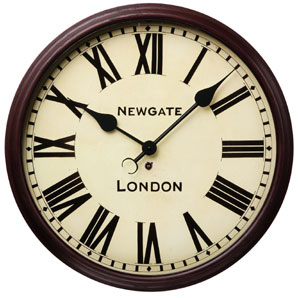Daylight Savings Time – a blessing and a curse! We celebrate the longer hours of daylight but mourn the loss of an hour’s sleep. It seemed like a good time to talk about time management. I don’t know about you, but when the days start to get longer I am more likely to be watching the clock so I can finish my work and have some playtime before darkness settles in. In this month’s newsletter I would like to share some time saving strategies, both high tech and low tech, that will hopefully provide you with more much needed play time.
Documentation
* Create simple data sheets and actually use them!
* Use a basic formula for writing goals and objectives:
S Specific M Measurable A Attainable R Relevant T Time Bound = SMART
* Treatment objectives need to be easily measured for easier/quicker note writing. Consider creating a cheat sheet with measurable “verbs” such as: summarize, define, verbalize, state, list, point, categorize, outline, sort.
* Create a Goal Library. Many electronic medical records now provide menus for the selection of short term goals but may still require you to write in a long term goal (mine does). Create a list of succinct long term goals for major skill set areas including Executive Functions, Swallowing, Verbal Expression, Auditory Comprehension, Voice.
* A good resource for developing a short term goal library is: speakingofspeech.com (click on materials exchange > medical/rehab > adult goals)
* For those of you who prefer to write your notes during a treatment session, consider doing this while the patient has been set up with an independent task such as writing biographical information, a word search, a sorting task etc. Make sure the task is relevant to established therapy goals and can be included in future documentation.
* I prefer to do my documentation at the end of the day, so I use the printout of my daily schedule to record key words for skill sets addressed, level of cueing required and % accuracy. This results in less thinking time during the time of day when my brain is tired and eager to get home!
* Clinical research has shown that oral engagement helps to facilitate sustained and selective attention. Put this research to good use by incorporating it into your doc time – lollipops, gum, carrot sticks, fire balls, licorice, almonds.
* You can also try using ear buds to focus your attention on your work versus what’s being discussed in the office. However, I would suggest that you utilize non-linguistic content such as white noise, instrumental music or nature sounds.
Meeting Productivity Requirements or How to Avoid the Lost Units
* A colleague of mine in an acute care hospital created a tote bag that she would carry from floor to floor. Since the majority of her day was spent doing bedside swallow evaluations or VFSS, the tote contained frequently used materials for dysphagia management: forms, straws, flashlight, tongue depressors, spoons, crackers, small jars of applesauce, pre-thickened liquids etc. This was especially helpful when dealing with the inconsistency of stocked items on the individual nursing units.
* I think we really underutilize the concept of therapy partners or groupings of 2 patients with similar treatment goals. I realize that a lot of us are restricted in the incorporation of this modality due to insurance regulations, but it should still be on our radar as a viable choice for so many good reasons.
* Similar to my colleague’s tote bag, I have used what I called my speech therapy survival kit. My kit was developed to reduce the need to return to the speech therapy department for materials for the patient who was unknowingly on room hold, refusing to leave their room, expressing fatigue etc. but who was willingly to participate in in-room therapy. My kit included a magnifying glass, stop watch, deck of cards, black pen, small pad of lined paper, penlight, small micro-recorder, plastic spoon, tongue depressor, picture cards and a straw. My survival kit has now morphed into my iPad!
* One of the most frequent delays to initiating a treatment session is the forgotten eyeglasses or dead hearing aid battery. I created a shoebox that contained hearing aid batteries and reading glasses of varying magnification. We also keep auditory amplifiers on hand with disposable ear buds (encoredataproducts.com or 1-866-926-1669)
* Bedside Activities / 10 Minute Fillers
Name a song with a food in its title?
The $25,000 pyramid (patient has to identify the target category)
Who am I? (provide a description of a famous person)
We’re going on a trip and these are the things we need to bring (listing items from A-Z)
Celebrity initial game (Name a celebrity with the selected initials)
Wheel of Fortune puzzle or Hangman
Education and Training
* Earn CEUs from the comfort of your own home – feel free to email me (geseminars@gmail.com) for an extensive list of online providers
* You can obtain pre-made inservice presentations in a PDF format from ASHA at asha.org/slp/healthcare/healthcareinservicetools. A very handy resource when you are required to provide education and training to patients, their families, caregivers and facility staff.
Enjoy the daylight, and may you have more of it!
Gina
